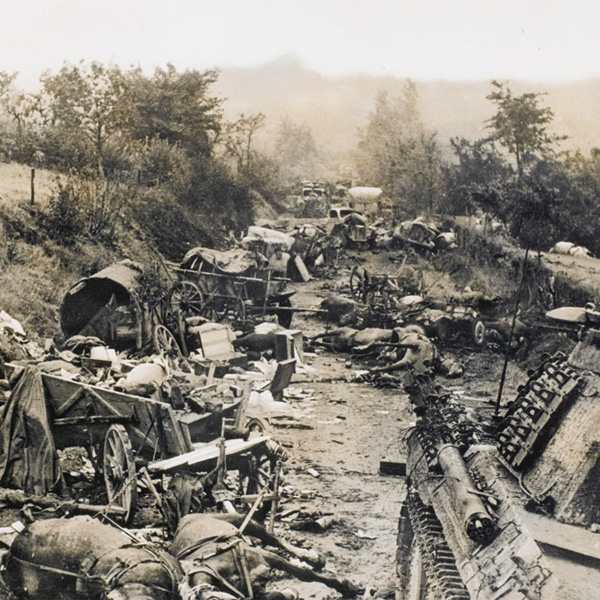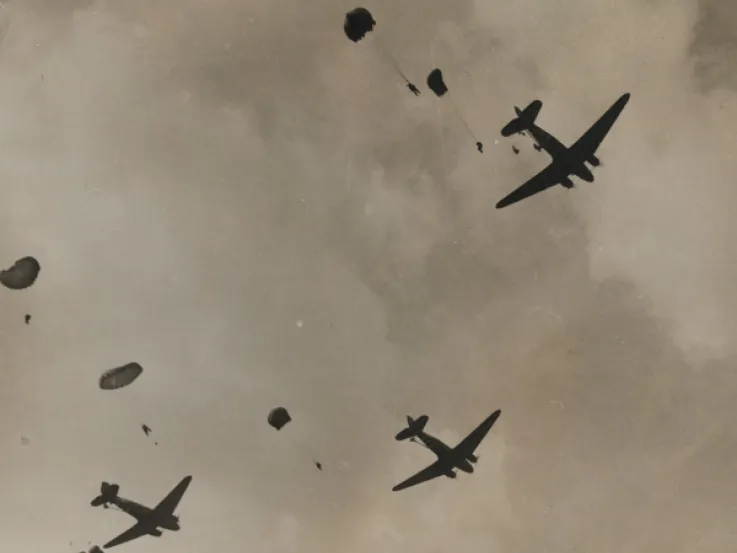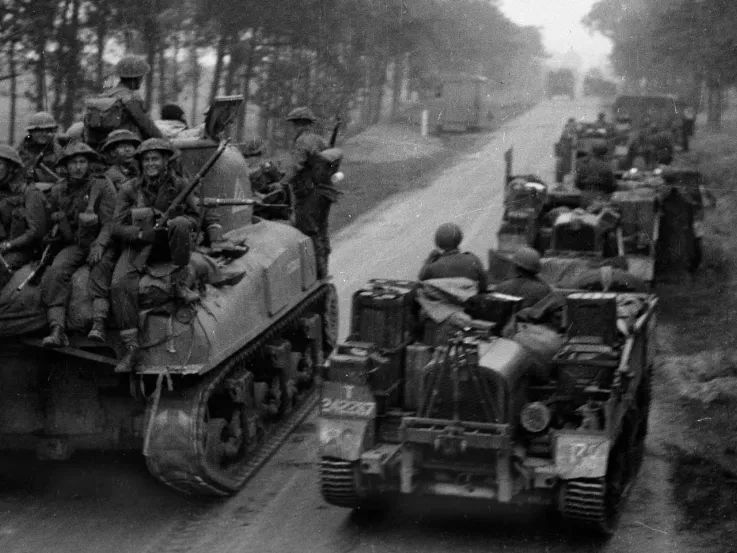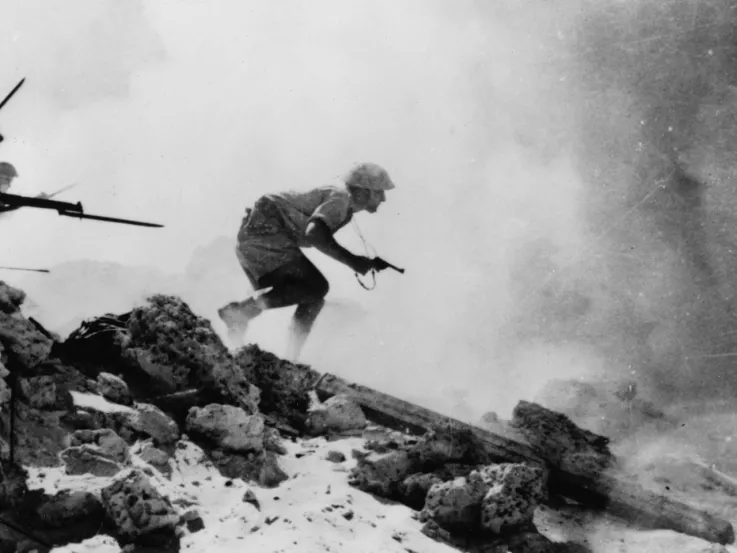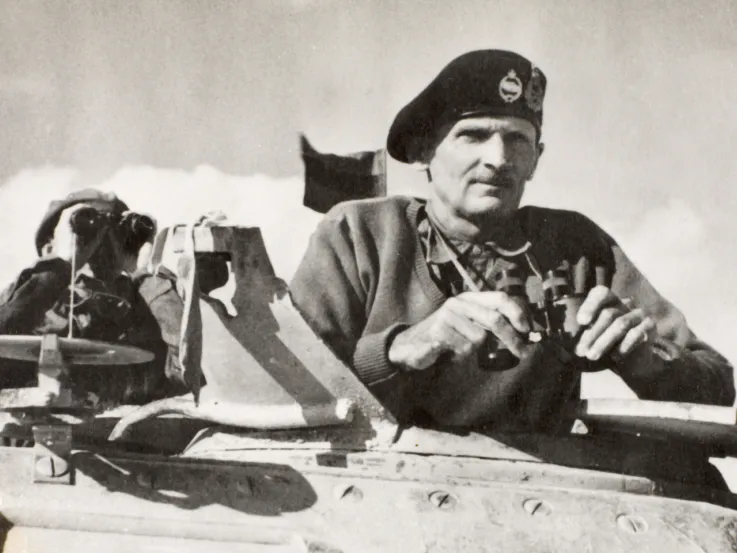Troops wading ashore from landing craft, 6 June 1944

Background
The Allies had succeeded in establishing a beachhead on D-Day. But many of the immediate strategic objectives of the landings had not been achieved and the Germans still controlled most of Normandy.
The majority of North West Europe was occupied by the Nazis, and had been for most of the Second World War (1939-45). The Allies still needed to capture key ports and towns in order to drive the Germans into retreat.
Landing tanks in Normandy, 1944

Supplying the invasion
By the end of 6 June 1944, the Allies had shipped a significant number of men, vehicles and supplies to France. But in order to advance further into Normandy they needed to establish a supply line back to England to support the ongoing invasion.
They were aided by the construction of PLUTO (Pipeline Under The Ocean). This delivered fuel to Normandy from pumping stations on the south coast of England.

Map of north-west France, 1944
Captain Alfred Rowe: The Beachmaster
This jacket belonged to Captain Alfred Rowe of The Middlesex Regiment.
The Allies immediately began moving supplies on D-Day. As a beachmaster, it was Alfred's job to keep vehicles, troops and supplies moving in the landing zone.
Alfred also had to negotiate the evacuation of casualties, often while under fire.
Captain Alfred Rowe's battledress blouse
Mulberry B at Arromanches, 1944
Mulberry
Until they could capture a major port, the Allies had to rely on two artificial floating harbours to supply the invasion force. These were built in sections and towed across the Channel for final assembly at the main beachheads.
Mulberry A, at Omaha Beach, supplied the Americans until it was destroyed in a storm on 19 June.
Mulberry B, on Gold Beach at Arromanches, was used by the British and Canadians. It remained in service for 10 months, allowing 2.5 million men, 500,000 vehicles and 4 million tons of supplies to be unloaded.
Sergeant Stan Scott: The Commando
Stan Scott served with No 3 Commando during the Second World War. Listen to him describing his experiences of the Battle for Normandy after landing on D-Day.
British troops advancing near Tilly, 1944

Bocage
The Allies had air superiority, more men and greater resources. And although the Germans made excellent use of the thick hedgerows of the ‘bocage’ countryside to put up a determined and skilful defence, they were unable to launch a decisive counter-attack.
By late June, the Allies had established a solid bridgehead. The Germans were being worn down just holding the line. The Allies had complete air superiority and their aircraft took a heavy toll on the enemy. On 26 June, the Americans captured the port of Cherbourg.
British troops entering the ruins of Caen, 1944

Caen
Moving inland, the British and Canadians made slow progress around Caen. But the Germans were forced to commit their best troops and most of their tanks to hold them back.
Caen was finally captured after fierce fighting in July, during which the town was almost totally destroyed. This victory allowed the Americans to break out on 31 July around Avranches.
Fighting in the ruins of Caen, 1944

Falaise pocket
Despite being almost surrounded by the Allies, Hitler refused to allow his forces to retreat. He ordered a German counter-attack towards Mortain on 7 August. But without adequate air support, they had little chance of success.
The Germans soon found themselves trapped in a shrinking pocket at Falaise, where they suffered heavy casualties from Allied artillery and air attacks.
While many of their soldiers managed to escape, 60,000 German soldiers were killed or captured. Nearly all their guns, tanks and vehicles were abandoned.
A German column destroyed by Allied aircraft near Falaise, 1944
German losses in the entire Normandy campaign were around 400,000. The British and Canadians suffered 84,000 casualties, and the Americans 125,000.
German prisoners near Falaise, 1944

Liberation of Paris
On 25 August 1944, Paris was liberated. With the Germans in full retreat, the Allies now advanced rapidly on a broad front through north-east France and Belgium towards the borders of the Third Reich.
Legacy
D-Day and the Battle for Normandy are often seen as the beginning of the end for Hitler. But Germany's defeat would probably have occurred even without Operation Overlord, given the huge casualties sustained fighting the Soviets on the Eastern Front.
But the landings certainly hastened the end of the war in Europe, drawing in forces that might otherwise have slowed the Soviet advance to Berlin. D-Day also ensured that the Western Allies were firmly established on the Continent at the war’s end, thus providing a counter to Soviet-backed communism at the start of the Cold War.









